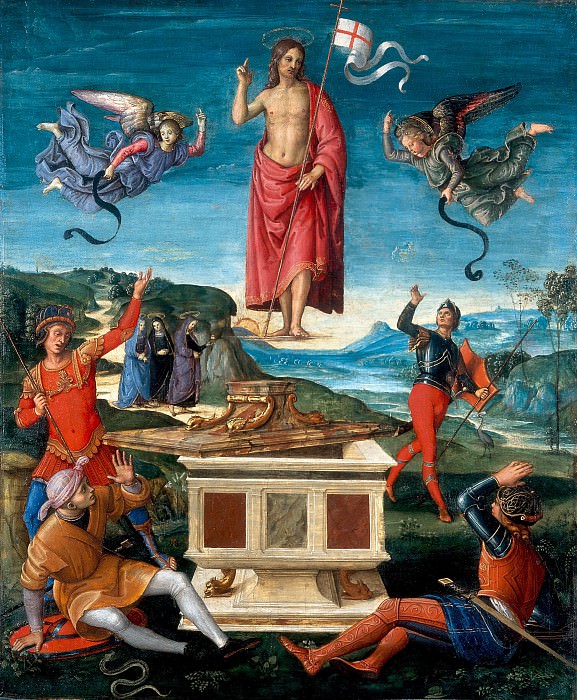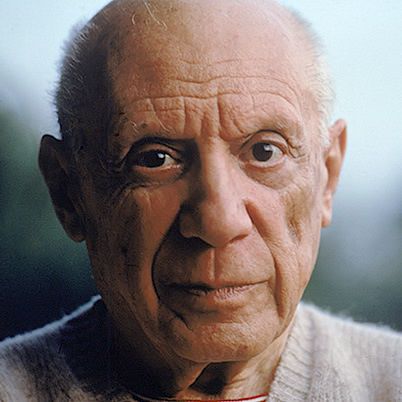The Enigmatic World of Dorothea Tanning's Art
Dorothea Tanning, an enigmatic figure in the art world, carved a unique niche with her surrealist creations that continue to captivate audiences worldwide. Her artistic journey, marked by a blend of personal imagination and psychological depth, offers a fascinating exploration into the realms of the subconscious and the surreal.
Early Life and Influences
Born in 1910 in Galesburg, Illinois, Dorothea Tanning's early life was marked by a sense of wonder and curiosity. Growing up in a small town, she was exposed to a limited cultural environment, but her innate talent and determination led her to pursue art with unwavering passion. Tanning's formative years were spent in Chicago, where she honed her skills and developed a unique visual language.
The influence of the surrealist movement, which began to gain prominence in the early 20th century, played a significant role in shaping Tanning's artistic vision. Surrealism, with its emphasis on exploring the unconscious mind and challenging traditional notions of reality, resonated deeply with Tanning. Her exposure to the works of Salvador Dalí, Max Ernst, and other surrealist pioneers provided her with a framework to experiment with new forms and concepts.
Artistic Style and Techniques
Dorothea Tanning's art is characterized by its dreamlike quality and psychological intensity. Her works often depict fantastical and otherworldly scenes that blur the boundaries between reality and imagination. Tanning's mastery of surrealist techniques is evident in her use of distorted figures, enigmatic landscapes, and symbolic imagery.
One of the defining features of Tanning's art is her ability to create a sense of eerie familiarity. Her paintings frequently feature figures and objects that appear both familiar and alien, evoking a feeling of unsettling recognition. This technique allows viewers to explore their own subconscious associations and interpretations.
Tanning's use of color and texture is also notable. Her palette ranges from vibrant and intense hues to subdued and ethereal tones, reflecting the emotional and psychological dimensions of her work. The textures in her paintings, often achieved through meticulous brushwork and layering, add a tactile quality that enhances the overall impact of her art.
Major Works and Themes
Throughout her career, Dorothea Tanning produced a diverse body of work that spans various mediums, including painting, sculpture, and printmaking. Her major works often explore themes of transformation, identity, and the interplay between the conscious and unconscious mind.
One of Tanning's most celebrated paintings is "Birthday" (1942), which exemplifies her surrealist style and thematic preoccupations. The painting features a woman emerging from a cake-like structure, surrounded by fantastical and grotesque elements. This work reflects Tanning's exploration of the interplay between reality and fantasy, as well as her interest in the themes of rebirth and metamorphosis.
Another significant work is "The Guest" (1948), which depicts a mysterious figure in an enigmatic interior. The painting's atmospheric quality and symbolic imagery invite viewers to delve into the psychological and emotional undercurrents of the composition. "The Guest" exemplifies Tanning's ability to create a sense of mystery and ambiguity, engaging the viewer's imagination and intuition.
Tanning's sculptural work also reflects her fascination with surrealism and the exploration of the human psyche. Her sculptures often feature distorted and abstracted forms, highlighting the fluidity of identity and the transformative potential of art. These works contribute to Tanning's broader artistic exploration of the boundaries between the self and the other.
Legacy and Influence
Dorothea Tanning's contributions to the art world extend beyond her individual works. As a prominent member of the surrealist movement, she played a crucial role in shaping the development of surrealist art and expanding its boundaries. Her innovative approach to form, composition, and thematic exploration continues to inspire contemporary artists and art enthusiasts.
Tanning's influence can be seen in the works of subsequent generations of artists who grapple with themes of the subconscious, identity, and the nature of reality. Her ability to merge personal imagination with universal themes has left an indelible mark on the art world, and her legacy endures through the continued appreciation and study of her work.
In recent years, there has been a renewed interest in Dorothea Tanning's art, with exhibitions and retrospectives celebrating her contributions to the surrealist movement and her impact on modern art. This resurgence highlights the enduring relevance of Tanning's work and its ongoing significance in contemporary artistic discourse.
Personal Life and Artistic Community
Dorothea Tanning's personal life was deeply intertwined with her artistic career. She was married to the renowned surrealist artist Max Ernst, and their relationship had a profound influence on her work. The couple's artistic collaboration and mutual support provided Tanning with a rich environment for creative exploration.
Tanning's involvement in the surrealist community extended beyond her marriage to Ernst. She was an active participant in surrealist exhibitions and gatherings, where she engaged with other artists and intellectuals who shared her interest in exploring the unconscious mind. Her interactions with figures such as André Breton and other leading surrealists enriched her artistic practice and contributed to the development of her unique style.
In addition to her artistic achievements, Tanning was also known for her role as a mentor and advocate for emerging artists. Her generosity and encouragement helped foster the careers of several young artists, and her legacy extends beyond her own work to include her contributions to the artistic community.
Exploration of Dreams and the Subconscious
A central theme in Dorothea Tanning's art is the exploration of dreams and the subconscious mind. Her works often draw upon the imagery and symbolism of dreams, reflecting her interest in the ways that the unconscious influences our perception of reality.
Tanning's approach to dream imagery is characterized by its surreal and often unsettling quality. Her paintings frequently feature dreamlike scenarios that defy logical explanation, inviting viewers to engage with their own subconscious associations and interpretations. This emphasis on the dream world reflects Tanning's belief in the transformative power of art and its ability to reveal hidden aspects of the self.
The exploration of the subconscious also extends to Tanning's use of symbolic and abstract forms. Her works often include enigmatic symbols and motifs that evoke a sense of mystery and ambiguity. These elements contribute to the overall psychological impact of her art, allowing viewers to engage with the deeper layers of meaning and emotion.
Evolution of Style and Technique
Throughout her career, Dorothea Tanning's style and technique evolved in response to her changing artistic interests and experiences. While her early work was deeply rooted in surrealism, she continued to experiment with new forms and approaches throughout her life.
In the 1960s and 1970s, Tanning's art began to incorporate more abstract and symbolic elements, reflecting her evolving interests and concerns. This period marked a shift away from the strictly surrealist approach of her earlier work, as Tanning explored new ways of expressing her artistic vision.
Despite these changes, Tanning's commitment to exploring the inner world of the subconscious remained a constant theme throughout her career. Her ability to adapt and innovate while maintaining a focus on the psychological and emotional dimensions of her work is a testament to her artistic versatility and vision.
Reflection on Identity and Transformation
Dorothea Tanning's art often reflects a deep interest in themes of identity and transformation. Her works explore the fluid and mutable nature of identity, as well as the ways in which individuals navigate the boundaries between self and other.
Many of Tanning's paintings depict figures that are both familiar and unfamiliar, highlighting the complexity of human identity and the ways in which it can shift and evolve. This exploration of identity is often linked to broader themes of transformation and metamorphosis, as Tanning's works frequently feature elements of change and transformation.
The sense of ambiguity and fluidity in Tanning's art invites viewers to consider their own experiences of identity and transformation, encouraging a deeper engagement with the themes and emotions expressed in her work. Through her art, Tanning offers a rich and multifaceted exploration of the human experience, inviting viewers to reflect on their own journeys of self-discovery and change.
The Impact of Tanning's Art on Contemporary Art
Dorothea Tanning's influence extends beyond her own time, with her work continuing to shape and inspire contemporary art practices. Her innovative approach to surrealism, combined with her exploration of psychological and emotional themes, has left a lasting impact on the art world.
Contemporary artists who engage with themes of the subconscious, identity, and transformation often draw upon Tanning's work for inspiration. Her ability to merge personal imagination with universal themes provides a rich source of reference for artists seeking to explore similar concepts in their own work.
Additionally, Tanning's contributions to the surrealist movement have helped to broaden the scope of contemporary surrealism, opening up new possibilities for artistic exploration and expression. Her legacy continues to be celebrated and studied, with exhibitions and retrospectives highlighting the ongoing relevance of her work in the context of contemporary art.
Conclusion: The Enduring Legacy of Dorothea Tanning
Dorothea Tanning's art remains a profound and compelling exploration of the surreal and the subconscious. Her unique approach to form, composition, and thematic exploration has left an indelible mark on the art world, and her legacy continues to inspire and captivate audiences today.
Through her innovative use of surrealist techniques, her exploration of dreams and the subconscious, and her reflection on identity and transformation, Tanning's work offers a rich and multifaceted view of the human experience. Her contributions to the surrealist movement and her impact on contemporary art underscore the enduring significance of her artistic vision.
As we continue to engage with Tanning's art, we are invited to explore the depths of our own imagination and confront the mysteries of the subconscious. Her legacy endures as a testament to the power of art to reveal, transform, and inspire.















